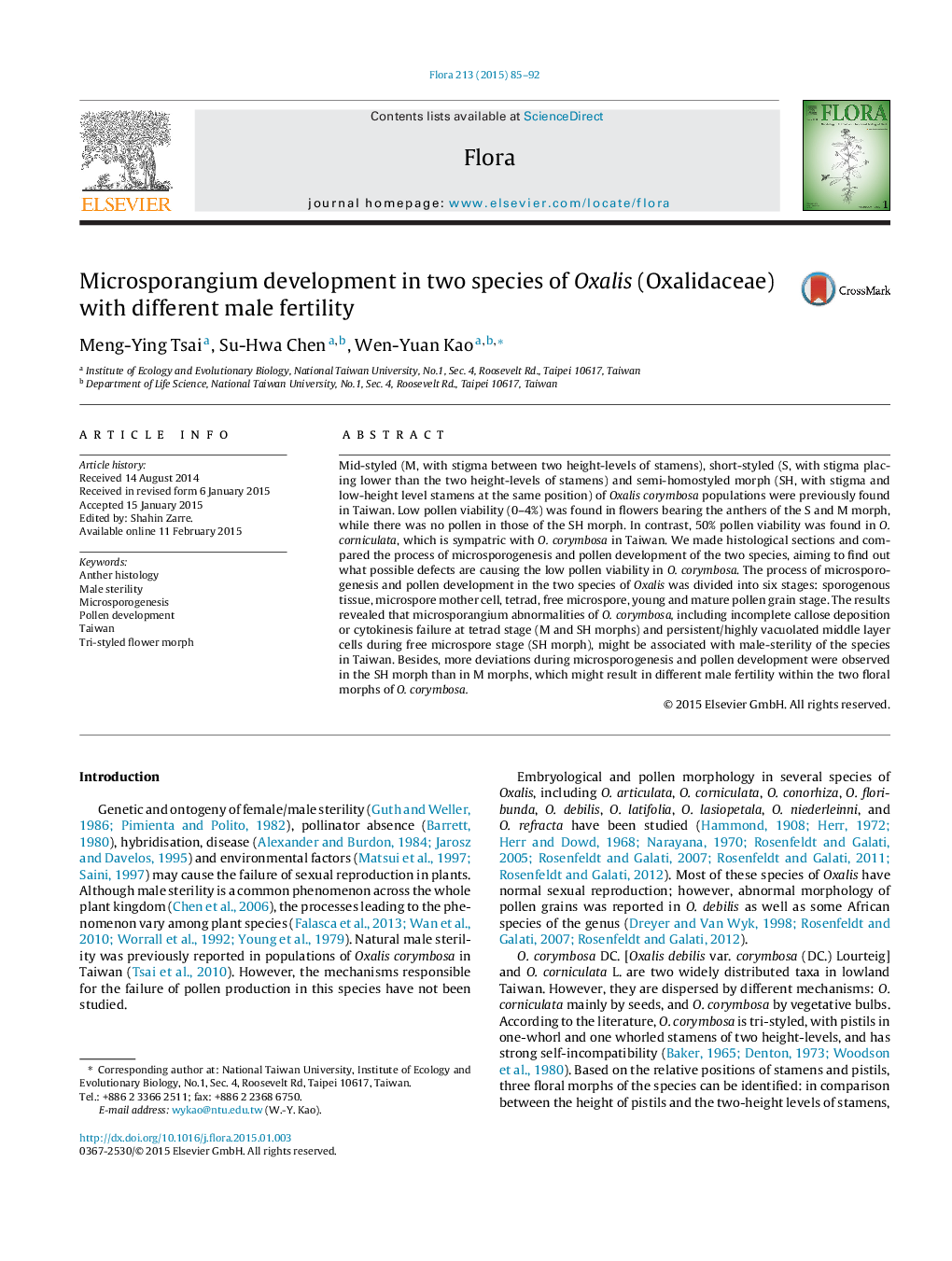| Article ID | Journal | Published Year | Pages | File Type |
|---|---|---|---|---|
| 2179389 | Flora - Morphology, Distribution, Functional Ecology of Plants | 2015 | 8 Pages |
•We provided comparison of microspore/pollen development between two Oxalis species.•Different male-fertile floral morphs (M&SH) in Oxalis corymbosa were compared.•M morph (partial male-fertile) shows obvious defect during free microspore forming.•SH morph (fully male-sterile) has several deviations from the sporogenous stage.•Persistent middle layer might result in pollen producing failure of O. corymbosa.
Mid-styled (M, with stigma between two height-levels of stamens), short-styled (S, with stigma placing lower than the two height-levels of stamens) and semi-homostyled morph (SH, with stigma and low-height level stamens at the same position) of Oxalis corymbosa populations were previously found in Taiwan. Low pollen viability (0–4%) was found in flowers bearing the anthers of the S and M morph, while there was no pollen in those of the SH morph. In contrast, 50% pollen viability was found in O. corniculata, which is sympatric with O. corymbosa in Taiwan. We made histological sections and compared the process of microsporogenesis and pollen development of the two species, aiming to find out what possible defects are causing the low pollen viability in O. corymbosa. The process of microsporogenesis and pollen development in the two species of Oxalis was divided into six stages: sporogenous tissue, microspore mother cell, tetrad, free microspore, young and mature pollen grain stage. The results revealed that microsporangium abnormalities of O. corymbosa, including incomplete callose deposition or cytokinesis failure at tetrad stage (M and SH morphs) and persistent/highly vacuolated middle layer cells during free microspore stage (SH morph), might be associated with male-sterility of the species in Taiwan. Besides, more deviations during microsporogenesis and pollen development were observed in the SH morph than in M morphs, which might result in different male fertility within the two floral morphs of O. corymbosa.
